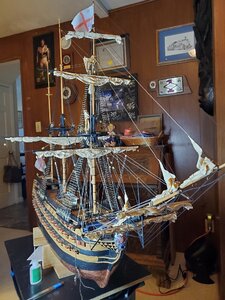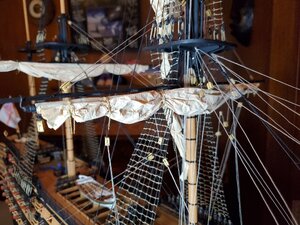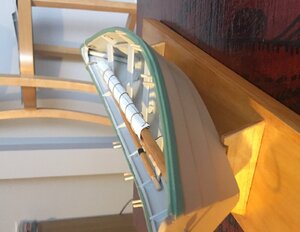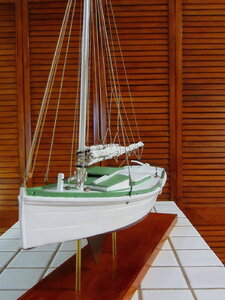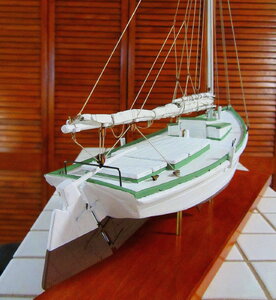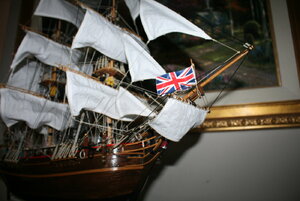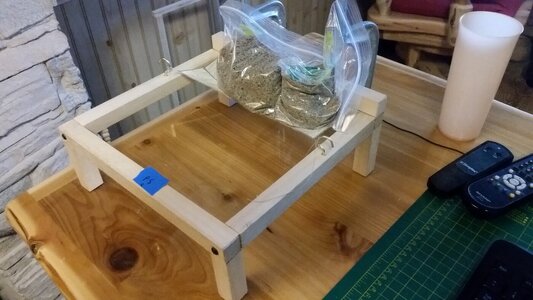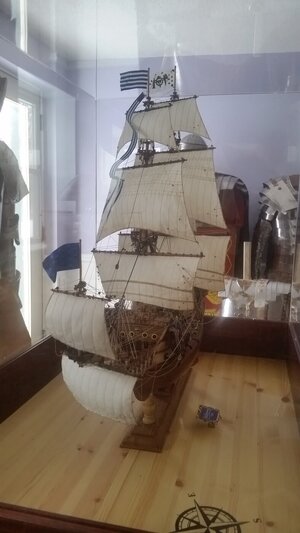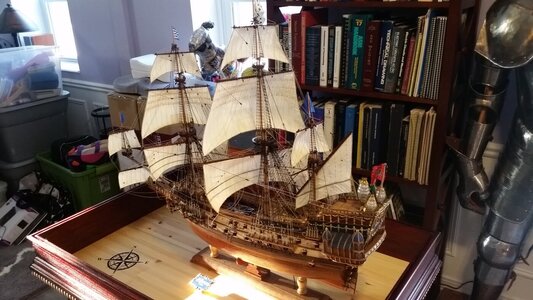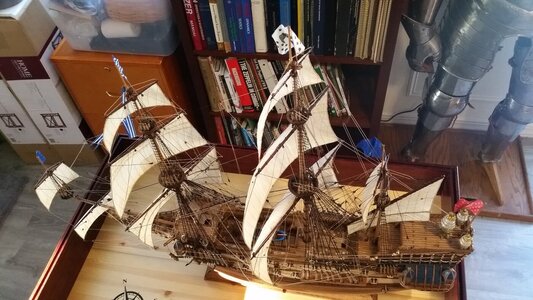Two Occre model kits that I have completed included a set of sails.
I chose not to use them: the associated brails, clew lines, sheets etc looked to be very messy and I was not convinced that the models would be enhanced.
While it is possible to scale down the size of sails 1:50 it is not possible to scale the thickness of the canvas to this extent.
This is detrimental to the appearance and authenticity of the model.
There are many glorious pictures and paintings of full rigged ships under billowing sail but this majesty is not conveyed by a model looking sadly becalmed.
I, too, have wondered about doping the sails and letting them dry with a fan behind them but have not tried it.
Perhaps we need some alternative material that could be supplied 'pre-bellied' but I guess plastic would be a big no-no for purists.
As my models lack any water to float in perhaps they do not need sails. Cutty Sark, Victory, Golden Hind, Vasa and many other preserved./replica ships are in dry dock.
So why not my models?
Any thoughts?
I chose not to use them: the associated brails, clew lines, sheets etc looked to be very messy and I was not convinced that the models would be enhanced.
While it is possible to scale down the size of sails 1:50 it is not possible to scale the thickness of the canvas to this extent.
This is detrimental to the appearance and authenticity of the model.
There are many glorious pictures and paintings of full rigged ships under billowing sail but this majesty is not conveyed by a model looking sadly becalmed.
I, too, have wondered about doping the sails and letting them dry with a fan behind them but have not tried it.
Perhaps we need some alternative material that could be supplied 'pre-bellied' but I guess plastic would be a big no-no for purists.
As my models lack any water to float in perhaps they do not need sails. Cutty Sark, Victory, Golden Hind, Vasa and many other preserved./replica ships are in dry dock.
So why not my models?
Any thoughts?







